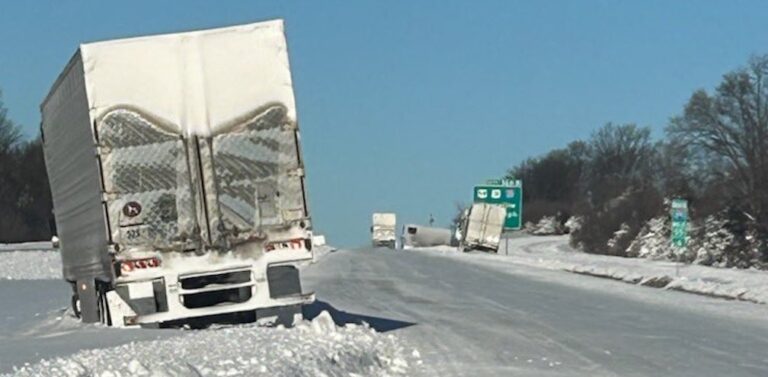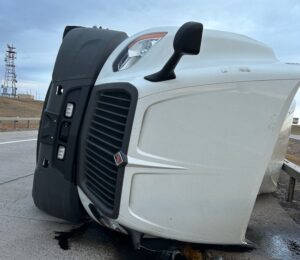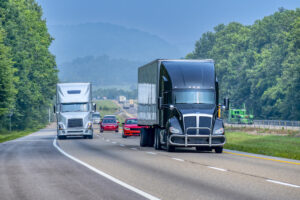Does your current trip plan include an updated weather report? If it doesn’t, you’re missing out on some crucial information that could impact your safety and the safety of others.
While no one would argue that weather predictions are completely reliable, the science of meteorology has come a long way in the last century. Thanks to satellite imagery, Doppler radar and other advances, weather systems can be identified and monitored earlier than ever. The Internet makes communication instantaneous. Widely available weather apps bring the latest information directly to your phone.
The National Weather Service, The Weather Channel and AccuWeather all offer apps that can provide current weather information both nationally and locally. AccuWeather offers to provide local weather based on your current GPS location. Other popular apps are Weather Underground, Storm Shield and Highway Weather. Most are free; some offer enhanced features or reduced advertising for an small fee.
The available weather information and delivery systems make events such as the 1900 Galveston, Texas, hurricane much easier to prepare for, saving thousands of lives. Back then, there was little warning of the approaching hurricane that destroyed more than 7,000 buildings and killed a number of people estimated to be between 6,000 and 12,000. It’s still the greatest weather disaster in U.S. history.
Contrast that storm with the entire 2024 hurricane season in the U.S., which has been called “one of the deadliest in recent memory,” by USA Today. Five named storms made landfall in the U.S., the worst of which was Helene, resulting in more than 250 deaths across six states. No deaths were reported for one hurricane while deaths in the single-digits were reported for two others. Less than 500 deaths were reported for the entire season.
While comparing the weather systems you might encounter on your next trip to deadly hurricanes may seem unreasonable, there is a link. The key reason for reduced numbers of fatalities was the ability of the public to prepare. The folks in Galveston in 1900 did not have that luxury.
There’s another similarity. Hurricanes are extreme examples of low-pressure weather systems, the same type of systems that bring wind and rain everywhere. When air pressure drops, moisture-laden air is able to rise to altitudes where cooler air forces the water to fall out. Whether it falls as rain, snow, hail or in another form depends on the temperature and other factors, but it all starts with an area of low pressure.
In the Northern Hemisphere, low-pressure systems spin counter-clockwise. They typically move from West to East, although the path can be changed by jet stream currents, other weather systems and more. If you’re driving through one, you might notice that the wind hits one side of your truck and then changes to the other side. Or if the low-pressure system is to your south, you may be driving into a headwind if you’re heading east. The point is that you can often predict the wind direction if you know where the center of the system is located.
Another important bit of information is how fast the system is traveling. That can help you estimate when bad weather will arrive, but it also impacts how long you’ll be in the bad weather. If the system and you are both traveling in the same direction, it’ll take you longer to drive out of the bad weather. If you’re headed west in an eastbound system, you’ll be out of it quicker.
If you’re driving in light rain, it may not matter. If you’re driving in a heavy snowfall, however, you’ll want to make good decisions about how far to proceed and when it’s safer to park and wait it out. Some weather apps provide predictions for each hour of the day, helping you plan when your best hours for driving will be.
If you’re like most drivers, your biggest weather interest is severe weather. Storms that bring high winds, tornadoes, heavy snowfall or freezing rain can be deadly. It’s best to avoid them when possible, but the job requires traveling and inclement weather is just a part of it. The problem is determining how bad it will be. That’s difficult without up to the minute information.
Each winter, one or more storms results in front-page photos of cars and trucks stranded on a snow-covered highway, often involved in a chain reaction accident. It’s certainly possible to be surprised by the weather, and rain and snowfalls can absolutely be higher than expected. Still, when heavy snows and slippery roads are predicted, one might wonder why so many vehicles were on the road in the first place.
Modern meteorology makes it possible to predict when storm systems will arrive in the area you’re in and in the one you’re traveling to. Using available resources to keep track of weather systems is one way to reduce your chances of getting caught up in the worst weather. While it may not be possible to shut down for days at a time to avoid winter storms, sometimes taking an hour for a meal can give snow-clearing crews a chance to plow roads and put down salt or chemicals.
Carriers generally monitor the weather and may use the information in their dispatch decisions, but it’s important to remember that the final decision rests with you, the driver. A fleet manager in an office 1,000 miles away doesn’t have the visibility that you do through your truck’s windshield. Shutting down or delaying a departure is a judgement call. Make sure your judgement is considered. Communication is the key. Let your dispatch team know what you’re doing and why, and don’t be intimidated into making an unsafe driving decision. Competent carriers will support your judgement.
Today’s drivers have more tools than ever before that can help increase efficiency and safety, but they only work when they’re used. Make a weather report a part of your load acceptance process, include weather in your trip planning and check again periodically during your trip.
Cliff Abbott is an experienced commercial vehicle driver and owner-operator who still holds a CDL in his home state of Alabama. In nearly 40 years in trucking, he’s been an instructor and trainer and has managed safety and recruiting operations for several carriers. Having never lost his love of the road, Cliff has written a book and hundreds of songs and has been writing for The Trucker for more than a decade.














